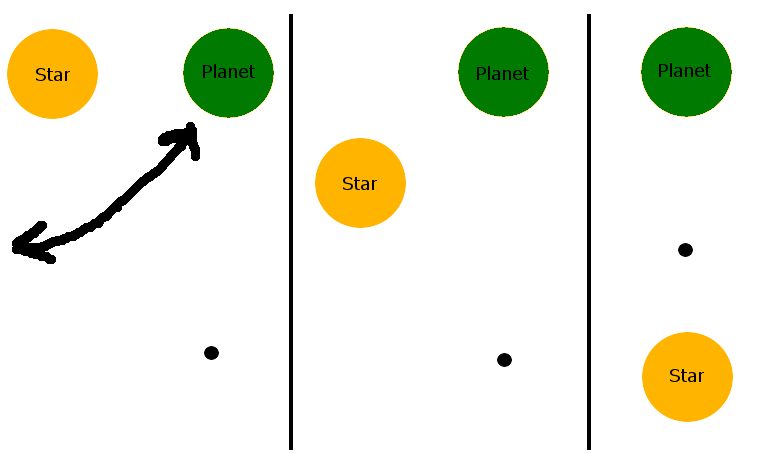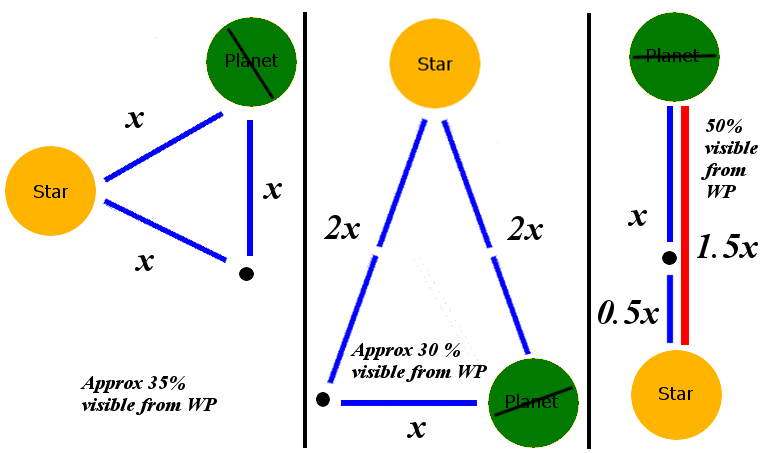Orbits are cool, right?
Dynamic systems that don't look the same every time you enter them. Great.
One problem however is that whilst they often look different they don't always look good.
Throw in the fact that you'll likely need a greater than normal sun distance and things can get rather dark and obscured.
Consider the witch point placement in each of the three hypothetical scenarios below.
Left Diagram: Orbital Mechanics
On the left we have the main planet orbiting the sun, destined to pass between it and the witchpoint (black dot). When that happens the planet will not only look distinctly plain (no visible surface details) but will also likely obscure the star (further highlighting scale issues) and making fuel scooping even more unlikely/impractical.
Middle Diagram: Spacelane Triangle
In the centre we have the classic Oolite static triangle. Result is a reliably well lit planet and reasonable fuel scooping practicality. Note that if the triangle is non-equilateral and the sun is closer then lighting remains good, once the sun is further away then the main planet is increasingly obscured; fuel scooping is also more rewarding when you don't have to travel so far. Drawbacks here are that the closer sun highlights scale issues and once you introduce orbits then all the benefits are lost.

Right Diagram: Hypothetical Conjunction
Rightmost of our hypotheticals has the witchpoint placed between the sun and the main planet. In some ways this is the most logical place to put a witchpoint, between the two most typical system destinations. Great lighting, fuel scoooping is good, and you will almost never have both the planet and the sun/star in your field of view at the same time - in fact the distance here is the most efficient use of space given that the wichpoint is the centre of the system. Visually a bit boring however and if you want orbits then the whole thing falls apart unless they both orbit the wichpoint but then that's a bit odd...
So, can we still have orbital mechanics and have something like the last scenario?
Well, suppose orbits only applied to other, added planets or moons - as if the witchpoint orbited so that it was always between the sun and the main planet. You could then see orbiting bodies but the main planet would almost always be well lit and highly visible. This is especially relevant when the distances used are greater than normal (and for orbits they likely should be!).
In other words, the diagram on the right would remain static, with other bodies orbiting either the sun (added planets) or one of the planets (moons).
Even without orbis it could be good if the witchpoint were closer to the star than the main planet. Fuel scooping is often a waste of time, or at least is more of a spectacle/experience than it is a practical strategy. With a closer star however, it could be a very wise decision if you've just made a large jump into a dangerous system.
I still think it would be good to have at least some distance between witchpoint and star however an account of at least three things:
- Solar glare
- Fuel scooping should be a choice rather than a 'no-brainer' IMHO
- Closer star means either it is also closer to the main planet or that the witchpoint must be further from the planet
Got a better idea? Please, I'd very much like to hear it.




